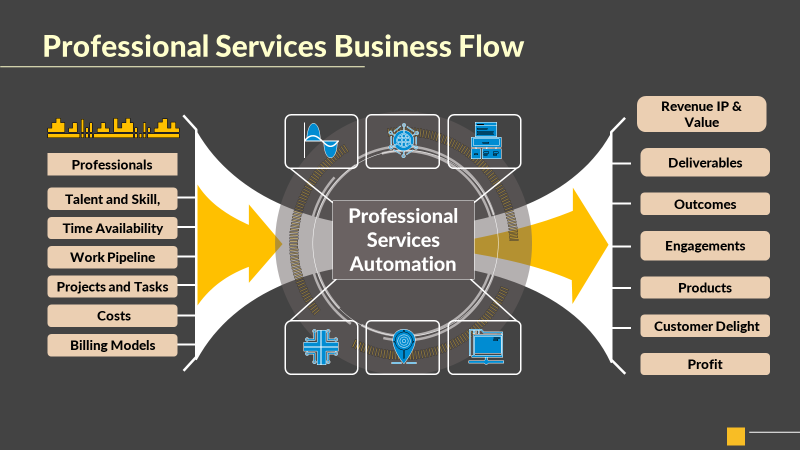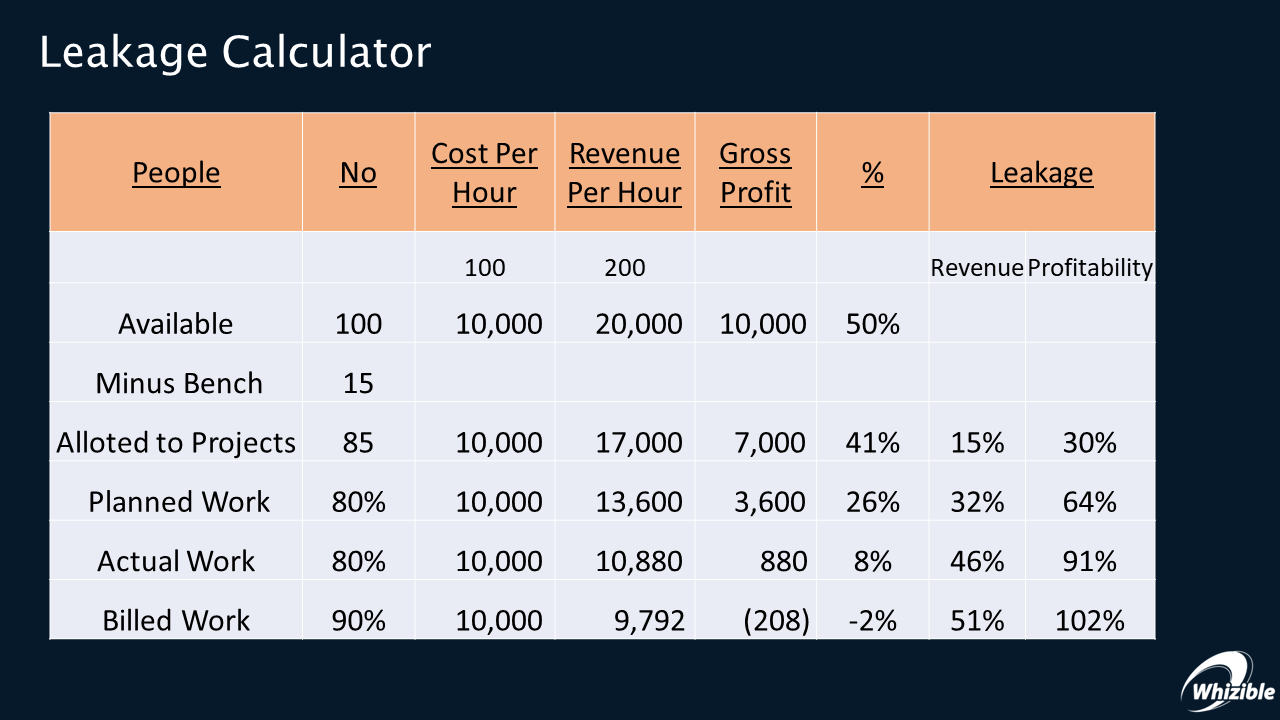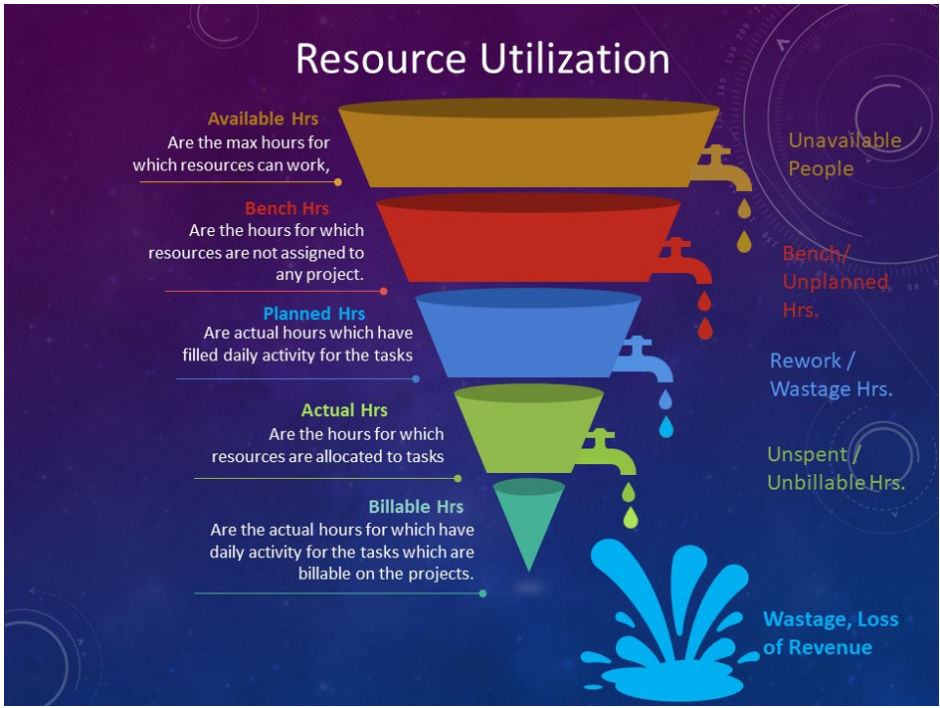In a webinar held on 1 December 2022, Whizible Founder & CEO Vishwas Mahajan dissected the Time-and-Material Model adopted by most professional services organizations (PSOs) to explain the origins of revenue and profitability leakage. The key messages from this webinar are summarized in this article.
Knowledge organizations or professional services organizations (PSOs) typically generate revenues by selling specialized services. For these organizations – which can offer IT or engineering services but can well be architectural or legal firms – their employees’ skills and time (hours) are the critical inventory items. Within a finite amount of time, the employees engage with the customers on projects or deliveries and convert them to the desired outcomes or deliverables. The time for which these employees are available depends on their pipeline of work, and PSOs incur the cost of this time in earning the revenues for the work done. The chart below depicts the various formulations used to describe PSOs’ business model – ranging from talent to value to costs to cash.

Breaking down a PSO’s business model is crucial to identifying the key points the company has to consider when shifting its orbit. While there are many nuances to such a business model, at a broad level, it can be described as being one of two variants.
- The Fixed Price Model: Here, the customer pays these PSOs for specific deliverables, after receiving those deliverables.
- The Time-and-Material (T&M) Model: The customer engages the PSO – and its employees who possess specialized skills – to get the desired deliverables. The PSO’s employees are effectively paid for the time they contribute towards developing the deliverables.
The number one cost element for PSOs is the people cost, which can sometimes account for up to 50-70% of the firm’s revenue. Further, this cost has low variability, and companies end up committing to this cost regardless of their business outcomes. Accordingly, increasing their topline – their revenues – is the sole driver for increasing their profitability. To put it another way, PSOs’ efficiency in converting their skill-time inventory into customer value is their key operating driver. To understand the impact of this driver, consider a simple example wherein a PSO can staff 100 employees on a project which earns the firm $200 an hour, but the employees’ wage is $100 an hour.
In the ideal scenario, the PSO would employ the skills of all 100 employees and generate a per-hour revenue of $20,000 with a 50% gross profit margin (after deducting employees’ wages). However, if only 85 employees are staffed on the project and 15 “benched” for whatever reason, the firm’s per-hour revenue falls to $17,000, while the profit margin drops to 41%. Compared to the ideal scenario, this situation represents a revenue “leakage“ of 15% but the corresponding profitability leakage is 30%. The calculations for these leakages are shown below.
- Revenue leakage = [(Revenues from employees available) – (Revenue from employees allocated to a project)]*100 / (Revenues from employees available)
- Profitability leakage = [(Profitability from employees available) – (Profitability from employees allocated to a project)]*100 / (Profitability from employees available)
Further, even the 85 employees staffed on the project in our example may work only 80% of the time, something PSOs usually consider as planned work. Established PSOs also report their resource utilization as a key indicator of their profitability. Also, the actual work is likely about 80% of the planned work, of which only 90% gets billed to the client. The net result is that the PSO might end up leaking all of its profits and even incur more employee costs than the revenues earned from the project, as shown in the chart below.

In such a situation, PSOs need to identify the exact resource utilization at every stage and predict revenue and profitability accordingly. Doing so will allow them to take timely corrective measures and prevent profitability leakage, but it requires both discipline and an appropriate tool to stem the underutilization of talent.

At Whizible, we have observed that organizations have multiple “sources of truth” – based on different tools such as Excel or Google sheets – that drive their operations. We offer our clients an integrated toolset that can help maximize, track, and optimize resource utilization time and, thereby, improve profitability. For starters, try our free Excel model for assessing the impact of resource utilization on your profitability.
Whizible enables PSOs to shift their orbit from poor visibility on allocation to automated, real-time resource utilization reports.


